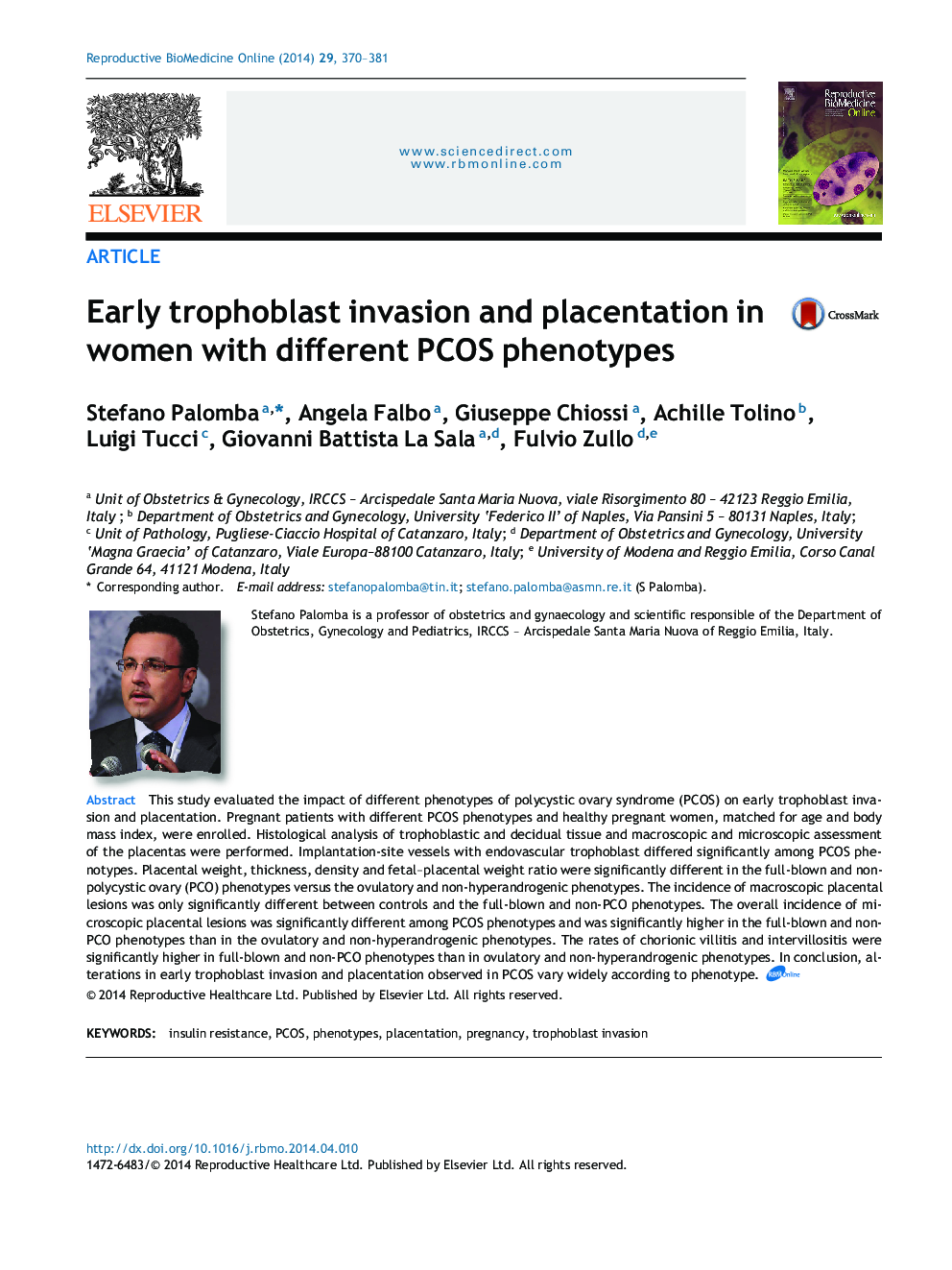| Article ID | Journal | Published Year | Pages | File Type |
|---|---|---|---|---|
| 3970127 | Reproductive BioMedicine Online | 2014 | 12 Pages |
This study evaluated the impact of different phenotypes of polycystic ovary syndrome (PCOS) on early trophoblast invasion and placentation. Pregnant patients with different PCOS phenotypes and healthy pregnant women, matched for age and body mass index, were enrolled. Histological analysis of trophoblastic and decidual tissue and macroscopic and microscopic assessment of the placentas were performed. Implantation-site vessels with endovascular trophoblast differed significantly among PCOS phenotypes. Placental weight, thickness, density and fetal–placental weight ratio were significantly different in the full-blown and non-polycystic ovary (PCO) phenotypes versus the ovulatory and non-hyperandrogenic phenotypes. The incidence of macroscopic placental lesions was only significantly different between controls and the full-blown and non-PCO phenotypes. The overall incidence of microscopic placental lesions was significantly different among PCOS phenotypes and was significantly higher in the full-blown and non-PCO phenotypes than in the ovulatory and non-hyperandrogenic phenotypes. The rates of chorionic villitis and intervillositis were significantly higher in full-blown and non-PCO phenotypes than in ovulatory and non-hyperandrogenic phenotypes. In conclusion, alterations in early trophoblast invasion and placentation observed in PCOS vary widely according to phenotype.
